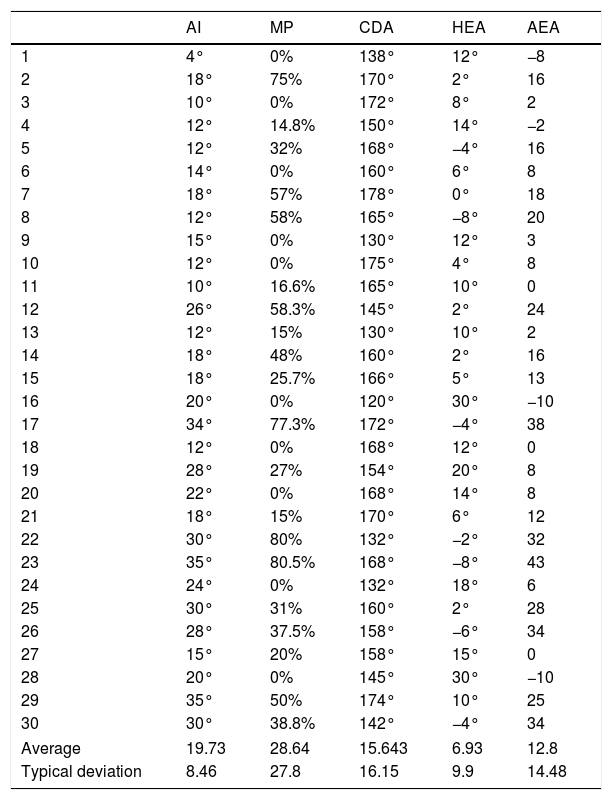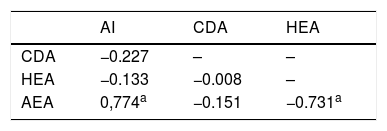To relate, in non-ambulatory subjects with palsy, Reimers’ migration percentage with standardized radiological measurements, including the acetabular–epiphyseal angle.
MethodDescriptive, observational and transversal study of 15 individuals with cerebral palsy at levels IV and V of the Gross Motor Function Classification System, aged between 3 and 9 years. Radiological measurements of the acetabular index, Hilgenreiner's epiphyseal angle, acetabular–epiphyseal angle, neck-shaft angle and Reimers’ migration percentage of each of the hips were performed.
ResultsCorrelations between acetabular index, epiphyseal angle and acetabular–epiphyseal angle were obtained with respect to the Reimers migration percentage. For hips with a migration rate of 15% or less, a positive correlation was observed between acetabular and epiphyseal angles.
ConclusionsIn our population, the measurement between acetabular and epiphyseal inclination represents the highest association with the hip migration percentage.
Relacionar, en sujetos con parálisis cerebral no deambulantes, el porcentaje de migración de Reimers con medidas radiológicas estandarizadas, incluyendo el ángulo acetábulo-epifisario.
MétodoEstudio descriptivo, observacional y transversal de 15 individuos, de edades comprendidas entre 3 y 9 años, con parálisis cerebral, pertenecientes a los niveles IV y V del Gross Motor Function Classification System. Se realizaron medidas radiológicas del índice acetabular, el ángulo epifisario de Hilgenreiner, el ángulo acetábulo-epifisario, el ángulo cérvico-diafisario y el porcentaje de migración de Reimers de cada una de las caderas.
ResultadosSe obtuvieron correlaciones entre el índice acetabular, el ángulo epifisario y el ángulo acetábulo-epifisario respecto al porcentaje de migración de Reimers. Para las caderas con un porcentaje de migración igual o menor del 15% se observó correlación positiva entre los ángulos acetabular y epifisario.
ConclusionesEn nuestra población, la medida entre la inclinación acetabular y epifisaria es la que mayor asociación presenta con el porcentaje de migración de la cadera.












